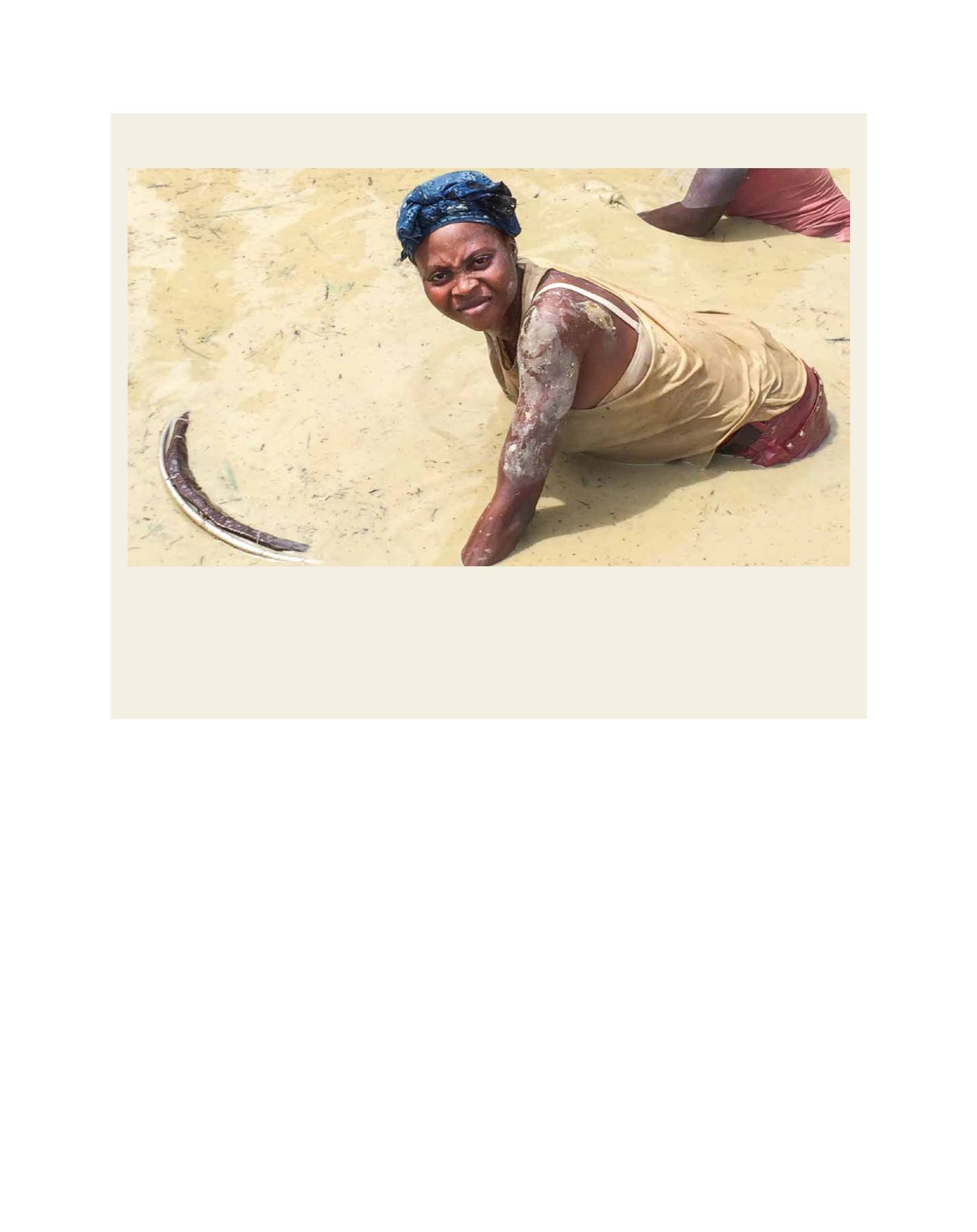

[
] 72
village community banks. Regionally, there is a need to
provide disaggregated data for effective decision-making,
service delivery and citizen engagement; and information
for Africa to own its narrative.
3
There is also a need for
continued research and initiatives targeted at the ASM
subsector, to define clear policy guidelines in relation to
data collection, development planning and transforming
the sector into decent employment for women.
Not surprisingly, the multifaceted nature of livelihoods
strategies for women who work in ASM also emerged as
a key theme. For many women, involvement in ASM is
part of their livelihoods strategy and is balanced with other
income-generation activities such as agriculture, as ASM is
often seasonal.
Regarding collaboration between LSM and ASM, common
themes were conflict over allocated mining concessions;
women in ASM feeling disempowered in their relationships
with LSM; lack of government support for LSM-ASM collabo-
ration; lack of incentives for LSM engagement with ASM; and
the potential for other agents (such as the Ghana University of
Mines and Technology) to broker positive capacity-building
opportunities between LSM and ASM.
A recurrent theme in all the workshops was the need for
women to organize better. Naila Kabeer and others, writing
on ‘organizing women in the informal economy’, quotes
from Shalini Sinha that “studies on women have suggested
that fear cripples women to effectively organize to receive
common resources for their collective good.”
4
Women have
been brought up in fear of their husbands, employers and
communities. They live in constant fear of losing their liveli-
hoods, starvation, losing their children to illness and being
thrown out of their homes. However, ECA’s research on
women in ASM alluded to another dimension or constraint to
organizing: opportunism has led to a scramble for resources
by the apex women’s mining organizations at the expense of
rural women. Most of the ASM groups were organized only
on paper and at the executive level, with no outreach activi-
ties for women at grass-roots level.
Women miners’ associations and women’s cooperatives are
an area of potential opportunity for capacity development and
provision of improved services to members. Governments,
development partners and financial institutions often find it
easier to engage with and provide support to groups rather
than individuals.
Profile: Rebecca
Rebecca is a 21-year-old galamsey miner at Kwabeng. Galamsey – an
adulteration of the phrase ‘gather them and sell’ – is a form of mining
in the informal sector and is outside the legal and regulatory framework
of the country. The operations may be mechanized or artisanal, but the
miners do not have legal access to the mineral concession.
Rebecca is educated to secondary school level, but has not
undergone any technical training. She has a six-month-old baby, and
came to the mining site on her own to make a living. “Life became
difficult for me after delivering my baby, as the baby’s father abandoned
us, leaving us with no financial support, so I started doing galamsey
work to make ends meet,” she says. “My family members think the
galamsey work is difficult but they cannot take care of me either so
they do not say anything when I am out here working. I use the money I
make to take care of my baby and myself. I am better now than before.”
Rebecca works in galamsey mining to make a living
Image: ECA
A B
etter
W
orld
















